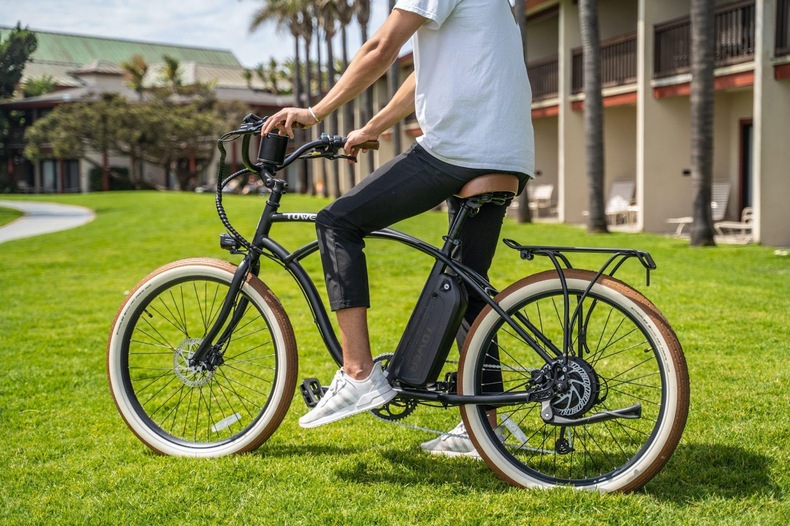How to Prolong Your E-bike’s Battery Life [5 Tips]
If you own an e-bike, you know that the battery is one of the most critical components. Your e-bike is nothing more than a conventional bike without a battery. Because batteries may be costly, they must last as long as feasible.
To save the most energy when riding your e-bike, we recommend using pedal assist rather than depending totally on the bike’s motor. Also, when storing it, keep it half-charged at all times. Battery life is measured in the low 20-30% range and 90-95% range.
5 Tips to Prolong the Life of E-bike’s Battery
Here are some suggestions for extending your bike’s battery life.
1. Use the Pedal Assist
One of the most excellent features of electric bikes is the pedal assist mode, which is controlled by a microprocessor on the handlebars. You may choose between many power levels, ranging from very low to high. When turning the pedals, the motor will seamlessly provide the specified power.
A low value decreases the power (torque) produced and the maximum motor-assisted speed. If you pedal faster than the top motor speed, the power will fade out, and you will be on your own.
It is not always necessary to move at full speed. Most e-bikes feature several levels of assistance that you may adjust as needed. The higher levels are excellent for steep terrain or moving quickly.
However, in general, the intermediate option is enough and protects your battery. Even on level surfaces, you generally require a little help. Therefore, using bikes with pedal assist is one of the best methods for making your e-bike’s battery last longer.
2. Store the Battery in Adequate Temperatures
Bring the battery into the warmth with you, maintain it at room temperature, and enter it right before you want to set off. This is because an e-bike battery loves to operate in temperatures ranging from ten to twenty-five degrees.
E-bike owners who believe it is too cold to ride in the winter should keep the battery between 10 and 20 degrees Celsius and the charge level between 50 and 80% to avoid going into deep sleep mode.
Extreme heat or cold will impair performance. Cooler temperatures are preferable for lithium batteries. Don’t allow your electric bicycle battery to cool if you want to extend its life. Warm is OK but hot to the touch is not.
Batteries should be stored at temperatures ranging from 32°F to 77°F. Extreme temperatures of more than 104°F should be avoided. When the lithium powder inside the battery cells warms up, it loses electrical resistance. Warmer temperatures cause the battery to drain faster. You’ll need to charge it more frequently.
3. Wash the Battery or Motor with Care
Battery technology innovation is a critical component in the acceptance of e-bikes. It is the technology that is powering e-bikes both literally and figuratively. Nonetheless, almost every e-bike manufacturing firm expects only modest advances in e-bike battery tech over the coming 5 to 7 years, primarily in battery software.
While most e-bike batteries and cables are insulated well against intense rainfall, they shouldn’t be immersed or wiped with a high-pressure sprayer. We suggest disconnecting the battery from the frame, cleaning the box and tray with a damp towel, and thoroughly drying everything.
This is compatible with the bulk of manufacturers’ recommendations. Wash a bicycle using a towel and detergent water instead of a garden hose to avoid pushing water past delicate greased gaskets that keep equipment sealed and well-oiled.
4. Store It Partially Charged
Do not keep your e-Bike battery connected to the charger after charging hours have passed. When you do this, you risk creating poor charging cycles, which may be highly damaging to the health of your battery.
When charging your battery before your next ride, avoid setting it up ultimately. Lithium-ion batteries deteriorate with time. That deterioration occurs the longer they are charged to a greater voltage. Also, if you don’t intend to ride your e-bike for an extended time, don’t leave the battery ultimately charged.
It is also preferable to partially drain it; maintain at least 40%-70% charged. When charging your battery, never keep it attached to the charger for an extended period. Disconnect the charger instead when the battery is 90%-95% charged.
You should only fully charge your battery every few weeks and never entirely deplete it. You recharge your batteries when they are between 30% and 60% charged.
5. Be Considerate When Using Boost Mode
Boost mode is a fun function found on many eBikes that allows you to accelerate to your motor’s speed limit in seconds. However, boost mode quickly drains your eBike battery and might reduce its longevity.
Boost mode is fantastic for occasional use, but if you want to extend the life of your eBike battery, you shouldn’t use it sparingly. Even yet, the battery lifespan reduction caused by boost mode is tiny, so if you are a speed junkie or enjoy using boost mode on your eBike, it may be worth the minor sacrifice in battery lifespan to fully utilize boost mode.
Also, be mindful of how you utilize your power. Determine if you use the most significant energy to travel the shortest distance. Many believe that the most tremendous power is consumed with the highest speed.
However, using the most power for the shortest distance begins at 0 mph. In other words, traveling at high speeds consumes the most significant amount of energy. Suppose you can decrease your energy consumption from zero to your cruising speed. In that case, you can significantly lengthen the life of your battery.
Final Words
E-bikes are an excellent mode of transportation, but their batteries may be costly to maintain. You presumably want your e-bike battery to survive as long as possible if you possess one.
Assuming you’ve read all five of our advice for extending the life of your e-battery, bike’s you can rest confident that your e-battery bikes will not expire on you early.

